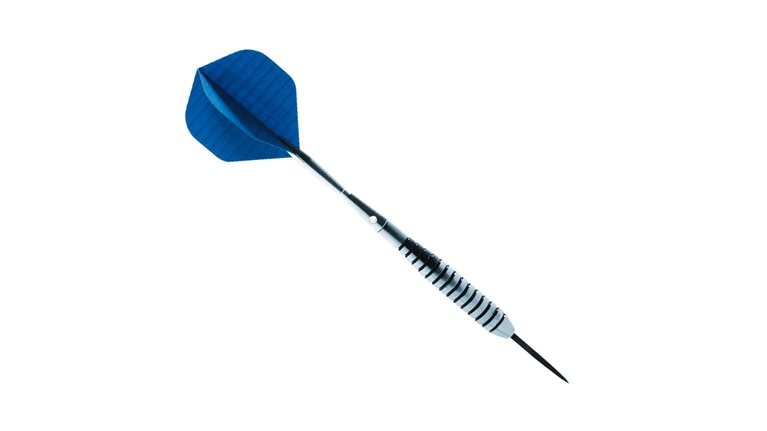Procurement leaders are facing one of the toughest market environments of their careers. A combination of macroeconomic factors—including COVID-19 shocks, trade policy shifts, workforce scarcity, energy transition, and even extreme weather events—have upended long-running trends that have benefited the global economy for several decades. The Russian invasion of Ukraine has caused the greatest humanitarian crisis in Europe since the Second World War and further disrupted long-standing economic relationships.
In the years before the pandemic, rising productivity and declining costs for many inputs—achieved through lean and just-in-time strategies and the globalization of supply chains, among other factors—had allowed many procurement organizations to operate successfully. But now the inflationary surge and frequent scarcity of critical supplies have made shortcomings of the traditional operating model increasingly visible and costly (see sidebar “A snapshot of procurement and macroeconomic sentiment”). These shortcomings include a lack of reliable long-term planning, growing concentration of supply, limited insight into supplier economics, lack of collaboration across functional teams, and a failure to adopt and scale proven technologies that could reduce transactional loads. And the war in Ukraine has brought to the fore a host of noneconomic factors that must now also be considered in sourcing decisions.
To operate in this new context, procurement organizations are facing fundamental changes to management practices, capabilities, and supplier ecosystems based on now-outdated assumptions. We are no longer in a world where assuming “an annual RFP will yield 3 percent price savings” is a viable operating model. After a year of continual and intensive action to adapt, many procurement organizations have deepened their understanding of their supply chains and deployed new levers. But more can be done.
Procurement organizations have a unique opportunity to set more ambitious goals, define a broader role for their teams, attract new talent, build new capabilities, and deploy new systems. Chief procurement officers (CPOs) can assess the organization’s readiness to step up with a few incisive questions:
- Have we quantified the potential impact of inflation, volatility, and supply chain disruptions at the commodity and supplier level?
- Do we deeply understand our suppliers’ industries and their dynamics? How are we sharing our insights with other functions to help protect revenues and margins?
- Do we have a road map to protect margins and mitigate supply risk via pricing, technical, demand, inventory, process, design, financial, and commercial levers?
- Do we have a proven playbook to recover and then control costs as inflationary pressures subside, volatility trends change, and supply chains are redesigned?
- How are we embedding the learnings and improvements from this challenging period into our go-forward operating model? How can we incorporate noneconomic factors in our decision making?
A strategic road map for procurement
The lessons from the past year form a strategic road map for procurement, comprising three horizons and 12 major action themes (Exhibit 1). The road map is designed to drive a cross-functional response to market uncertainty—with procurement at the center—and to improve companies’ operating models. The goal is to emerge from recent disruptions as a much more resilient and efficient company.

The road map starts with data-rich enablement. Companies can quantify how inflation and disruptions are affecting their spend and set up the cross-functional, data-enabled infrastructure to enable an informed response. They can then turn their attention to identifying a comprehensive set of responses that focus on securing supply and protecting margins through a cross-functional, advanced set of levers. Finally, organizations can embed the learnings and practices they develop by investing in new solutions, ways of working, talent, and capabilities to ensure sustained resilience and efficiency.
Enable immediate action
For any company, the first task is to quantify an independent perspective on the impact of inflation and volatility across the entire spend base. Tying budgets to external assessments—such as movements in Treasury bond prices or the CPI—may underestimate risk exposure and not be granular enough to prioritize the right response actions across categories.
Transparency into spend and a view on input cost inflation by category and geography are critical. Gaining these insights requires an intimate understanding of the supply base and its economic drivers. Some leading companies are already increasing their use of indexing and should-costing to determine the areas of exposure and create fact bases for discussions with suppliers. Companies that cannot easily link their major categories to an index have experienced the biggest challenges, given the opacity of input-cost dynamics and their inability to use futures for category management.
In these categories, the use of cleansheeting, embedded-cost analytics, synthetic indexing, and deeper supply market insights has proven powerful in discovering the true magnitude of exposure and creating robust fact bases.
Once companies quantify risk, they can mobilize cross-functional teams in “nerve centers,” whose sole focus is to protect margins across all levers. Some best practices have emerged for these nerve centers in high-exposure categories—such as executive empowerment for fast decision making, use of digital and advanced analyses for fast simulations, and integrated margin-management views. However, when not comprehensive enough, some of these short-term response efforts have failed to enable sufficient transparency and innovation to address the full scope of the problem. For example, a building-materials company set up a nerve center to manage the disruptions in its supply chain. But the nerve center focused exclusively on getting materials to warehouses. It did not explore opportunities to ship with alternate carriers, source from alternate regions, contract differently, challenge rates, or redesign products. As a result, the company became even more entrenched in its sourcing relationships with incumbent suppliers.
Take strategic action
To mitigate procurement risk, companies can apply a comprehensive set of commercial, technical, and cross-functional levers.
Commercial levers
Discovering new regions for sourcing—by either offshoring or nearshoring—has allowed companies to access suppliers with different cost structures and pressures. To master the art of regional diversification, procurement leaders balance the pricing improvements from new suppliers with the supply chain changes required to access them. For example, a home-durables manufacturer achieved substantial savings by sourcing from adjacent regions without reliance on global logistics. An electronics manufacturer responded to logistics challenges encountered in delivering products from Asia by expanding production to the United States and Mexico. And another major manufacturer addressed logistics challenges by sourcing its own fleet of aircraft to deliver products from Asia to end-user markets.
When we ask procurement leaders how they have handled cost pressures, they frequently cite supplier partnerships. However, partnerships have often focused on securing supply rather than capturing savings. For example, a packaging manufacturer focused on launching supplier collaboration efforts to ensure that it was the first customer serviced. But the parties did not develop new analytics or introduce new strategies. At the end of six months, the company’s external spend had risen much more than the prices of the underlying commodities.
Building strong supplier relationships not only helps a company obtain supply in an allocation environment but also positions it to benefit from future cost-saving opportunities. Some semiconductor buyers that have stuck with their supply partners during the good and bad times now benefit from preferred access to inventory from orders canceled by other customers.
Companies are building deep insights into supplier economics and embedding them into smarter contracting models. Facing across-the-board supplier cost escalations, an industrial manufacturer has now documented every escalation request in granular detail. It sought to better understand the exact cost drivers of each product or service, improve its internal cost models, and build better contracts indexed to the right commodities and input costs. When the commodity cycle turns, it will be well-equipped to use this information to renegotiate many of its supply contracts.
Smart contracting levers have allowed companies to use indices in a sophisticated way. Moreover, when combined with hedging and inventory optimization, contracting levers are powerful tools to manage margins for companies that invest in developing sophisticated insights about the dynamics of their supply markets. These leaders are tracking individual or synthetic indices that apply to the different drivers of cost for materials or services (such as raw materials, value-adding activities, fuels, logistics, and labor). And then they are adjusting prices dynamically, which offers relief as different elements of the total cost become less expensive: one manufacturer was able to mitigate 8 to 15 percent inflation across component categories by moving to a much more comprehensive and active index-based price adjustment.
Technical levers
With the right investments, procurement can take the lead in cross-functional discussions with its business partners to explore savings opportunities beyond commercial levers. To relieve the pressure on pricing, companies can seek to reduce total cost of ownership (TCO) through design and specification levers that also promote operational excellence. For example, a building-materials manufacturer faced with historically high costs for lumber and other inputs decided to look inward. It reduced total costs by redesigning products to enable the sourcing of more materials from lower-cost regions abroad, thus decreasing its dependence on high-cost suppliers in its own region. It also dramatically simplified its product portfolio—for example, by reducing the number of molding specifications by a factor of 20. These efforts are on track to deliver total cost reductions of 15 percent.
Another manufacturer responded to severe supply chain disruptions and historically high steel prices by pulling on design and demand levers—namely, insourcing—to almost double its EBITDA margin. The company had seen the input costs for its overseas manufacturing operations nearly double from 2020 to 2021. By redesigning its products so that it could eliminate labor-intensive production steps (such as welding), it was able to shift production to its home market. The company plans to ultimately move production to a nearshore location.
Rationalizing materials selection is a powerful—and permanent—way to structurally lower costs and gain more leverage over supply. By working with engineering in advanced design-to-value efforts, procurement leaders can discover new suppliers for a narrower set of higher-value materials. A durables manufacturer rationalized the number of raw materials used in its highest-volume product lines by applying design-to-value thinking. The rationalization allowed it to improve its cost base, provided access to less-constrained supply sources, and made it possible to redesign well-established products. Another example comes from the automotive sector, where manufacturers have simplified products (for instance, by removing wireless chargers or heated seats) to maintain production and sales while facing semiconductor shortages.
In addition, companies can upgrade their technologies to prevent themselves from becoming a buyer of legacy components. These are more difficult to source and more expensive because suppliers prioritize more profitable components and add a premium to legacy products. For example, companies with products still running on DDR3 memory pay more for semiconductors and have a harder time securing supply than those with products running on DDR4 memory.
Cross-functional levers
Companies in most industries were able to maintain their margins throughout much of 2021 by passing through cost increases. The need to manage input costs and uncertainty remains at the top of CPO and CFO agendas, especially in subsectors or product lines in which price pass-throughs are not possible (such as commoditized or regulated products or highly competitive markets). As a result, we continue to believe that resilience and structurally improved cost bases are a competitive imperative.
An automotive tier-one company addressed the risks in its semiconductor supply through a road map and procurement strategy that included two key levers. The first is an early-warning system that enables consistent long-term capacity contracting and reservations. The second is creating reservation and ordering flexibility in contracts through standard specifications. The R&D team built flexibility into the specifications, which allowed procurement to reserve semiconductors at the technology level (for example, field programmable–type semiconductors) and then order at the chip level with detailed specifications.
Every one of the companies described in this section faced circumstances unique to a specific context. However, all of their most effective responses combined a strong bias to action, a deep understanding of supply market dynamics, agile innovation, and rapid investment in new ways of working.
Spotlight on services
Services, a significant share of spend in many industries, offer a unique challenge in the current context. Strong demand, coupled with the Great Attrition, have created acute labor shortages and pushed labor rates higher, particularly in US service sectors (Exhibit 2). This has given rise to a sellers’ market. However, tackling the set of levers we discuss above for materials, especially in supplier partnerships, has delivered a real impact in services.

Commercial levers
To apply commercial levers in services, it is critical to gain a cleansheet understanding of labor rates. Procurement can use the insights to develop RFPs aimed at discovering new suppliers. A cleansheet view of rates also informs index-based adjustments to the category, ensuring that equitable adjustments are applied to the right portions of the total rate in a rising or falling market. Incumbent suppliers that have not faced a competitive challenge are more likely to suggest price increases that are not commensurate with the index-based movements and their impact on the wage portion of should-costs.
Companies can use smart contracting to boost productivity and manage total costs, independent of rate trends. For example, an agricultural-equipment manufacturer launched an effort to improve contractor productivity after finding that a contractor’s wrench time was less than half of the industry benchmark of 55 percent. The company created initiatives to mitigate the sources of loss originating from its own planning and introduced productivity terms into the contract, such as tying bonus multipliers to the contractor’s productivity and operating outcomes. This effort is on track to deliver a 5 percent improvement in total costs and has deepened the partnership with the supplier, which is incentivized to continuously improve performance.
Additionally, companies can change how they pay contractors. Taking a page from law firms, they can require technical-services providers to bill in shorter increments, such as 15 minutes (or even less). This allows companies to manage paid time with much more precision and minimize rounding up of hours. A mining company that required its maintenance contractors to shorten billing increments was able to reduce spending by 5 to 8 percent, depending on the trade. To use this approach, a company needs to enhance its ability to efficiently track contractor time on-site (ideally using automation) and establish targets for job durations. These are no-regret investments that will unlock much-needed cost improvements.
Technical levers
Scope opportunities are critical to managing total costs. Revising the frequency, activities, and service level of contracted work is a best practice to adopt in almost any circumstance. However, companies often miss the opportunities because they outsource scope management to suppliers and end up overconsuming or gold-plating the work. A mining company gained control over equipment-component repair costs by managing the frequency and activities for each repair episode while reducing total labor costs. This lever alone resulted in a cost improvement of approximately 5 percent.
The insourcing of services is a powerful lever in the current market environment, especially when contractors are already embedded in a company’s operations. If based on a carefully prepared business case, insourcing allows companies to reduce total labor costs while more closely managing utilization and productivity. For example, at the onset of the pandemic, an agricultural-inputs company reconsidered its facilities management strategy. With employees working from home and excess capacity in some groups, the company built the business case to insource facilities management. Insourcing helped reduce contracted spend and total labor costs by double-digit percentages. It also gave the company a flexible labor pool that it could redeploy more easily in response to changes to its physical footprint.
Institutionalize the new operating model
Current market challenges may continue. Most indicators suggest that commodity pricing pressure, labor shortages, supply chain congestion, and general volatility will persist over the coming 12 months, if not beyond. Procurement and business leaders must continue focusing on creating value, managing risk, and increasing resiliency in an uncertain context.
To win in this new normal, it will be up to procurement not only to swiftly mitigate immediate concerns but also to focus on building sustained, advanced capabilities that can be embedded in the operating model going forward (see sidebar “The CEO perspective: Five questions to ask your CPO”). Some companies have started setting up small agile teams focusing on advanced analytics and systems improvements to continue enabling a sophisticated, cross-functional approach to cost and margin management. One integrated chemical producer began a procurement transformation in late 2020 before inflation took off. As part of the journey, it set up a cross-functional transformation office that is now managing the producer’s inflation response across all levers without missing a beat.
Indeed, institutionalizing a new operating model is the next frontier for procurement and business leaders. It requires identifying the processes, talent, ways of working, and solutions that will sustain resilience and efficiency for procurement organizations that adapt in the following ways:
- take a leading role in protecting enterprise margin and growth
- step into the center of cross-functional value creation to apply a broad range of levers that put “everything in play” based on TCO and life-cycle views of spend
- build deep expertise in supply market dynamics and supplier economics to become thought partners and innovation engines that optimize their operations through insight
- invest in proven technology and process automation to free up high-value talent for the most strategic activities
- if necessary, acquire talent who understand suppliers’ markets and industries and are strong category managers, negotiators, and relationship builders
As procurement demonstrates its value to the enterprise, the stage will be set for procurement leaders to become full-fledged strategic partners to CEOs, CFOs, and COOs. They can expand from being the guardians of a portion of enterprise costs and use their deep expertise in supplier markets to help lead cross-functional teams focused on long-term, full-potential value creation and ultimate enterprise success.



